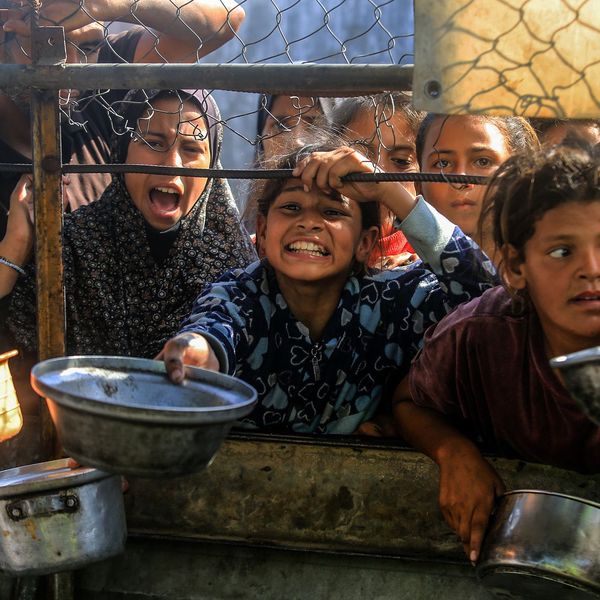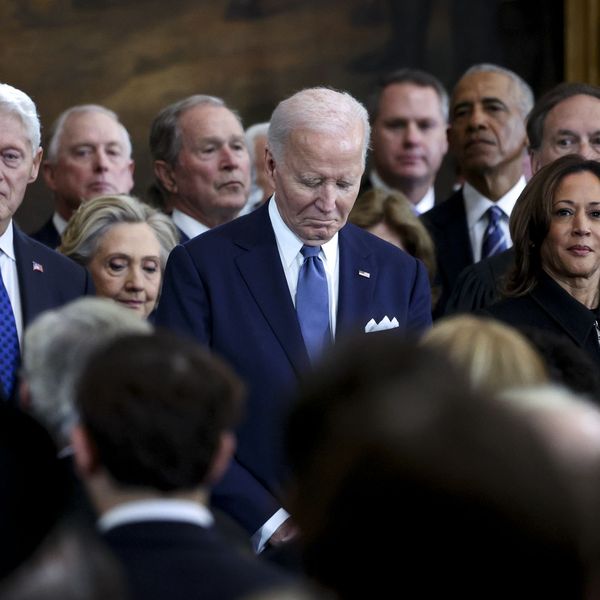
Israel’s Current Government Cannot Envisage Peace
An interview with C. J. Polychroniou.
A dangerous new phase in the Israeli-Palestinian conflict is currently under way. Following Hamas’s vicious October 7 attacks inside Israeli territory, the Netanyahu government vowed to destroy the militant group and ordered a “complete siege” of Gaza. More than 9,000 Palestinians have already been killed and the death toll will surely rise much higher as Israeli troops have now encircled Gaza City. How do we explain Hamas’s devastating attack on October 7? How should the Left have reacted to the Hamas’s attacks? What is Israel’s plan for Gaza? Is Israel guilty of war crimes? What is the mission of peace movements and activist groups inside Israel? Political scientist/political economist, author, and journalist C. J. Polychroniou addresses these questions in an interview with French-Greek journalist Alexandra Boutri.
Alexandra Boutri: It’s been 27 or so days since Hamas unleashed a massacre in Israel, killing more than 1400 people and capturing more than 200 hostages. Since then, Israel has been hammering Gaza with airstrikes and artillery as retribution for the surprise attack by Hamas and Israeli ground forces have also moved inside the besieged region, though without a clearly stated objective other than to destroy Hamas. So far more than 9,000 Palestinians have been killed, with the majority of them being women and children, and Gaza’s infrastructure has been totally destroyed. But let me start by asking you what you make of certain left-wing defenses of Hamas.
I just don’t get how support for Palestinians should translate into support for Hamas.
The assault on Gaza is driven by rage. But I also believe that Netanyahu is mostly interested in quelling the public anger against him and is hoping that he can do so with a war against Hamas...
Alexandra Boutri: Israeli peace activists must be facing extremely difficult challenges these days. It couldn’t be very safe for them to protest against the war. But, in general, what’s their mission?
C. J. Polychroniou: There are various peace movements and organizations in Israel and many individuals who refuse to serve in the Israeli Defense Forces (IDF). Israeli peace movements and activist organizations have different missions. You have “Looking Occupation in the Eye” (Mistaclim LaKibush Ba’Aynayim), a group of brave Israeli women and men whose mission is to draw attention to the military domination of Palestinians and the colonization of the occupied territories. Their activism revolves around defending Palestinians in the occupied territories and supporting them. For instance, activists in their movement try to protect Palestinian shepherd communities from harassment and violence by “violent extreme settler-colonists.” Mistaclim was founded in 2021 and its activists do their best to stop the transfer in West Bank, but they are outnumbered by the settler militias. Today, they are also voicing calls for a ceasefire, but the war drums are drowning out all other sounds.
There is of course Gush Shalom, which was founded by the late Uri Avnery and others in 1993. Gush Shalom activists have been sending out warnings for a long time that the perpetuation of the status quo towards Palestinians is inherently unsound and that it would eventually backfire. They have been trying to inform the Israeli public that Palestinians will not accept to live under occupation and oppression forever and that the possibility of another Palestinian uprising is a distinct possibility. They continue to do so today, even in a climate of isolation.
An Urgent Message From Our Co-Founder
Dear Common Dreams reader, The U.S. is on a fast track to authoritarianism like nothing I've ever seen. Meanwhile, corporate news outlets are utterly capitulating to Trump, twisting their coverage to avoid drawing his ire while lining up to stuff cash in his pockets. That's why I believe that Common Dreams is doing the best and most consequential reporting that we've ever done. Our small but mighty team is a progressive reporting powerhouse, covering the news every day that the corporate media never will. Our mission has always been simple: To inform. To inspire. And to ignite change for the common good. Now here's the key piece that I want all our readers to understand: None of this would be possible without your financial support. That's not just some fundraising cliche. It's the absolute and literal truth. We don't accept corporate advertising and never will. We don't have a paywall because we don't think people should be blocked from critical news based on their ability to pay. Everything we do is funded by the donations of readers like you. Will you donate now to help power the nonprofit, independent reporting of Common Dreams? Thank you for being a vital member of our community. Together, we can keep independent journalism alive when it’s needed most. - Craig Brown, Co-founder |
A dangerous new phase in the Israeli-Palestinian conflict is currently under way. Following Hamas’s vicious October 7 attacks inside Israeli territory, the Netanyahu government vowed to destroy the militant group and ordered a “complete siege” of Gaza. More than 9,000 Palestinians have already been killed and the death toll will surely rise much higher as Israeli troops have now encircled Gaza City. How do we explain Hamas’s devastating attack on October 7? How should the Left have reacted to the Hamas’s attacks? What is Israel’s plan for Gaza? Is Israel guilty of war crimes? What is the mission of peace movements and activist groups inside Israel? Political scientist/political economist, author, and journalist C. J. Polychroniou addresses these questions in an interview with French-Greek journalist Alexandra Boutri.
Alexandra Boutri: It’s been 27 or so days since Hamas unleashed a massacre in Israel, killing more than 1400 people and capturing more than 200 hostages. Since then, Israel has been hammering Gaza with airstrikes and artillery as retribution for the surprise attack by Hamas and Israeli ground forces have also moved inside the besieged region, though without a clearly stated objective other than to destroy Hamas. So far more than 9,000 Palestinians have been killed, with the majority of them being women and children, and Gaza’s infrastructure has been totally destroyed. But let me start by asking you what you make of certain left-wing defenses of Hamas.
I just don’t get how support for Palestinians should translate into support for Hamas.
The assault on Gaza is driven by rage. But I also believe that Netanyahu is mostly interested in quelling the public anger against him and is hoping that he can do so with a war against Hamas...
Alexandra Boutri: Israeli peace activists must be facing extremely difficult challenges these days. It couldn’t be very safe for them to protest against the war. But, in general, what’s their mission?
C. J. Polychroniou: There are various peace movements and organizations in Israel and many individuals who refuse to serve in the Israeli Defense Forces (IDF). Israeli peace movements and activist organizations have different missions. You have “Looking Occupation in the Eye” (Mistaclim LaKibush Ba’Aynayim), a group of brave Israeli women and men whose mission is to draw attention to the military domination of Palestinians and the colonization of the occupied territories. Their activism revolves around defending Palestinians in the occupied territories and supporting them. For instance, activists in their movement try to protect Palestinian shepherd communities from harassment and violence by “violent extreme settler-colonists.” Mistaclim was founded in 2021 and its activists do their best to stop the transfer in West Bank, but they are outnumbered by the settler militias. Today, they are also voicing calls for a ceasefire, but the war drums are drowning out all other sounds.
There is of course Gush Shalom, which was founded by the late Uri Avnery and others in 1993. Gush Shalom activists have been sending out warnings for a long time that the perpetuation of the status quo towards Palestinians is inherently unsound and that it would eventually backfire. They have been trying to inform the Israeli public that Palestinians will not accept to live under occupation and oppression forever and that the possibility of another Palestinian uprising is a distinct possibility. They continue to do so today, even in a climate of isolation.
A dangerous new phase in the Israeli-Palestinian conflict is currently under way. Following Hamas’s vicious October 7 attacks inside Israeli territory, the Netanyahu government vowed to destroy the militant group and ordered a “complete siege” of Gaza. More than 9,000 Palestinians have already been killed and the death toll will surely rise much higher as Israeli troops have now encircled Gaza City. How do we explain Hamas’s devastating attack on October 7? How should the Left have reacted to the Hamas’s attacks? What is Israel’s plan for Gaza? Is Israel guilty of war crimes? What is the mission of peace movements and activist groups inside Israel? Political scientist/political economist, author, and journalist C. J. Polychroniou addresses these questions in an interview with French-Greek journalist Alexandra Boutri.
Alexandra Boutri: It’s been 27 or so days since Hamas unleashed a massacre in Israel, killing more than 1400 people and capturing more than 200 hostages. Since then, Israel has been hammering Gaza with airstrikes and artillery as retribution for the surprise attack by Hamas and Israeli ground forces have also moved inside the besieged region, though without a clearly stated objective other than to destroy Hamas. So far more than 9,000 Palestinians have been killed, with the majority of them being women and children, and Gaza’s infrastructure has been totally destroyed. But let me start by asking you what you make of certain left-wing defenses of Hamas.
I just don’t get how support for Palestinians should translate into support for Hamas.
The assault on Gaza is driven by rage. But I also believe that Netanyahu is mostly interested in quelling the public anger against him and is hoping that he can do so with a war against Hamas...
Alexandra Boutri: Israeli peace activists must be facing extremely difficult challenges these days. It couldn’t be very safe for them to protest against the war. But, in general, what’s their mission?
C. J. Polychroniou: There are various peace movements and organizations in Israel and many individuals who refuse to serve in the Israeli Defense Forces (IDF). Israeli peace movements and activist organizations have different missions. You have “Looking Occupation in the Eye” (Mistaclim LaKibush Ba’Aynayim), a group of brave Israeli women and men whose mission is to draw attention to the military domination of Palestinians and the colonization of the occupied territories. Their activism revolves around defending Palestinians in the occupied territories and supporting them. For instance, activists in their movement try to protect Palestinian shepherd communities from harassment and violence by “violent extreme settler-colonists.” Mistaclim was founded in 2021 and its activists do their best to stop the transfer in West Bank, but they are outnumbered by the settler militias. Today, they are also voicing calls for a ceasefire, but the war drums are drowning out all other sounds.
There is of course Gush Shalom, which was founded by the late Uri Avnery and others in 1993. Gush Shalom activists have been sending out warnings for a long time that the perpetuation of the status quo towards Palestinians is inherently unsound and that it would eventually backfire. They have been trying to inform the Israeli public that Palestinians will not accept to live under occupation and oppression forever and that the possibility of another Palestinian uprising is a distinct possibility. They continue to do so today, even in a climate of isolation.

